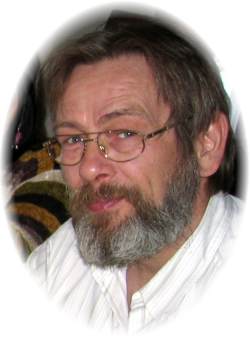
Download
PDF-file CV Dr. Holger Frommert - Tabular form
Download
PDF-file Selected documents as annex to the
CV Dr. Holger Frommert
New! Have a look to my
collection of
vector graphic maps and the related
services –
generation of thematic maps with your own data
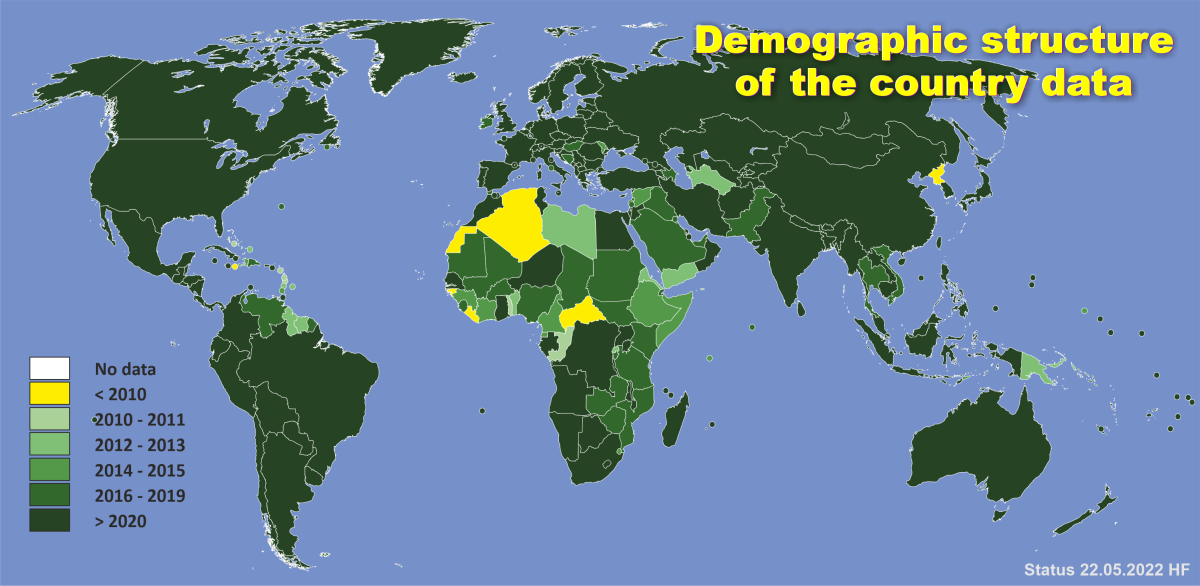
Curriculum Vitae
Germany and Spain 2012 - today
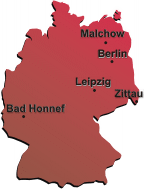 Since
the end of 2012, I am usually back in Malchow for family
reasons, because my mother needs help because of her
age. I work from here on different projects, partly
home-based, partly on-site. Over the last few years, I
have worked on projects for InCompass-International
Consultancy Services Ltd, but also developed my own
projects on my own.
Since
the end of 2012, I am usually back in Malchow for family
reasons, because my mother needs help because of her
age. I work from here on different projects, partly
home-based, partly on-site. Over the last few years, I
have worked on projects for InCompass-International
Consultancy Services Ltd, but also developed my own
projects on my own.
Examples of such projects are:
- Peruvian Ministry of Interior Information
Security Projects
- Creation and revision of tender documents for
Peru's biometric passport
- Other projects for various Peruvian institutions
- Various projects for
InCompass-International Consultancy Services Ltd,
including biometric registration and control of
refugees for Greek authorities
- Development of a decentralized doublet-free
allocation procedure of National ID Numbers with
coded personal information for the work of Civil
Register Authorities in countries with
underdeveloped infrastructure
 In
addition to these projects, I have created a web site
for consultants that provides country information in
maps and as links to further sources. The site is based
on a link database that provides not only simple country
information but also specific information such as
energy, environment, crime and terrorism. This site is
designed to help consultants get a picture of a country
in the shortest possible time.
In
addition to these projects, I have created a web site
for consultants that provides country information in
maps and as links to further sources. The site is based
on a link database that provides not only simple country
information but also specific information such as
energy, environment, crime and terrorism. This site is
designed to help consultants get a picture of a country
in the shortest possible time.
West Africa -Golf of Guinea States - Zone E and F
Nigeria, Togo, Benin, Ghana, Ivory Coast and Cameroon
2016 - 2017
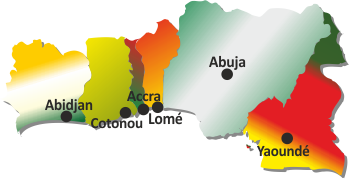 In
2016, I participated in a one-month maritime safety
evaluation mission in the West African states of
Nigeria, Benin, Togo, Ghana and Ivory Coast of the Gulf
of Guinea, which was tasked with defining a project to
increase safety at sea. The Mission also visited the ICC
co-ordination center in Cameroon in Yaounde for the
whole Gulf area and in Douala the MRDC Coordination Unit
for Zone D, which is the only area to have its own
permanent operational unit in Malabo represents a
prototype to other coordination centers. The actual
project area, however, were the first 5 states. I was
responsible for the IT and communication technology in
this project.
In
2016, I participated in a one-month maritime safety
evaluation mission in the West African states of
Nigeria, Benin, Togo, Ghana and Ivory Coast of the Gulf
of Guinea, which was tasked with defining a project to
increase safety at sea. The Mission also visited the ICC
co-ordination center in Cameroon in Yaounde for the
whole Gulf area and in Douala the MRDC Coordination Unit
for Zone D, which is the only area to have its own
permanent operational unit in Malabo represents a
prototype to other coordination centers. The actual
project area, however, were the first 5 states. I was
responsible for the IT and communication technology in
this project.
In particular, the coast of
Nigeria is a major focus of international piracy, with
approximately 80% of the security incidents recorded in
2015 in Nigeria's national and international waters.
All previous projects were focused on supporting the
national navy, and much less on the maritime police
units of the riparian states. On the other hand, the
approach I followed was aimed at including the
investigation of the illegal structures on land, which
are always upstream and downstream of the actions at
sea.
It was designed to set up national data centers where
relevant information from all stakeholders should be
concentrated and evaluated. As an approach, the
formation of a data warehouse was recommended, in which
the stakeholder feed information and for them useful
information - taking into account the data security and
access rights - can be queried. These data centers
should be located at trusted national institutions and,
in turn, relevant information exchanged in a second step
with the neighboring states and the other states
belonging to the respective zone. Nigeria was proposed
as a pilot project, because this country is on the one
hand the problem focus, and on the other hand already
has well-structured institutions. If the pilot project
and the necessary software work well enough for the
conditions in Nigeria, it can easily be transferred to
other states with simpler structures.
For IT and communication, the involvement of the
activities in the ongoing WAPIS project of Interpol and
the national police authorities was examined and
discussed. For various reasons, objective as well as
subjective, this is difficult to imagine.
As part of the mission, the existing conditions of
all involved stakeholders in the visited countries of
the region were examined and cataloged.
Jordan 2014 - 2016
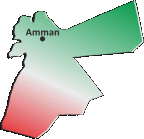 In
2014, as part of an EU project, I participated in the
evaluation of a 2-phase tender for hardware and software
for the support of the Jordan Energy Information Center.
At this stage, the technical and financial suitability
of potential candidates for the project was determined.
My job was to support the evaluation by the Jordanian
Commission. After the evaluation of the first phase, 6
companies remained, which were invited to submit their
technical and financial offers in the second phase of
the tender.
In
2014, as part of an EU project, I participated in the
evaluation of a 2-phase tender for hardware and software
for the support of the Jordan Energy Information Center.
At this stage, the technical and financial suitability
of potential candidates for the project was determined.
My job was to support the evaluation by the Jordanian
Commission. After the evaluation of the first phase, 6
companies remained, which were invited to submit their
technical and financial offers in the second phase of
the tender.
For the second phase, I have to revise and partially
update the previously prepared tender documents. After
the completion of the documents, as well as the offer, I
was again commissioned with the evaluation of the
technical and financial offers. The contract was awarded
to the Chinese company Beijing North Star Technology
Development Co. Ltd .. which made both the technical and
the best financial offer.
I was then entrusted with the control of the
technical implementation of the contract, which I
executed until the handover of the Energy Information
System (EIS) to the Ministry of Energy and Mineral
Resources. The EIS is active and can be used by all
interested persons under
http://eis.memr.gov.jo/.
The EIS is designed in its project conception as an
information system with web-based data collection -
manual or structured data entry from files - as well as
SCADA interfaces - for direct process data acquisition -
of stakeholder information. As part of software
realization, the process data of a solar farm of the
ministry was directly recorded via the latter interface
and is currently still connected.
In addition to these data, the EIS team will
incorporate other data - international data, standards,
etc. and linked to it by the central system for
analysis. For external and internal analysts the
information is prepared. In addition to these standard
queries, the individual data is also used to create your
own queries and links. These can easily be created using
a built-in web-based interface and stored on the
dashboard. The results can be saved as graphics or as
tables - with export filters to standard programs such
as Excel or PSPP - for further processing.
The content of the project was to supply and install
the required hardware servers, routers, etc. as well as
to program the software - Java applets and HTML code as
well as standard libraries. A program of a Chinese
energy company was tailored to the needs of the
Jordanian Ministry of Energy.
The overall process was
monitored by me and led to a very positive result.
Paraguay 2014-2015
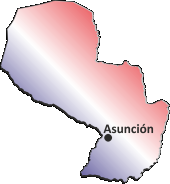 In
October 2014 I started in the IOM project
(International Organization for Migration)
"Proposals for the modernization of border
management from Paraguay". The project had
two phases, the first inventory in Paraguay.
In this phase, the following activities were
carried out:
In
October 2014 I started in the IOM project
(International Organization for Migration)
"Proposals for the modernization of border
management from Paraguay". The project had
two phases, the first inventory in Paraguay.
In this phase, the following activities were
carried out:
- Inspection and evaluation of various border
checkpoints - airports, ports and ground - with a
representative level of IT support and cooperation,
nationally and bi-national,
- Status assessment of central institutions of the
Migration Police, including the IT sector and
system,
- Recording the tasks assigned to the migration
police, and
- Visits to the Identification department of the
National Police, which is responsible for the
issuance of national identity cards and regular
national passports
In the following 3 months was prepared the
basic information for the modernization
concept for the management of migration
flows in the country, based on the
observations of the first phase. Components
of this approach were:
- Development of a control system based on IBM
(Integrated Border Management) with special
consideration of the national migration service,
including the development of standards for its
employees,
- Proposals for coordination and improve
cooperation with the National Police, including the
internal data exchange,
- Suggestions for improvement of the computer
system - introduction of national identification
number as a unique key field, and
- Detailed proposals for a re-engineering of all
visited border inspection posts - starting with the
PCF Ciudad del Este (most difficult conditions) as a
pilot project.
Central America 2011
In November and December 2011 I was
contracted by the International Organisation
of Migration to held seven bi-national
workshops trying to show the requests of the
Integrated Border Management and the reality
seen in the border check points of the
region. Additionally should be elaborated a
evaluation of the visited check points and
there should be mentioned possibilities to
improve the border security.
The following seven countries were included: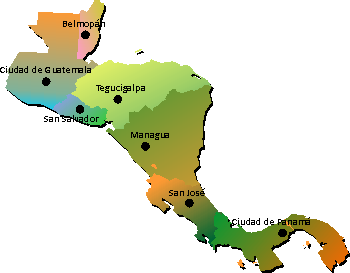
- Belize
- Costa Rica,
- El Salvador,
- Guatemala,
- Honduras,
- Nicaragua y
- Panamá.
In the trip were visited 12 border
checkpoints, mainly land border checkpoints,
but also any airports and ports, the last
specifically in El Salvador. The following
border checkpoints were visited:
- Melchor de Mencos - Benque Viejo (Guatemala –
Belize)
- El Florido - El Florido (Honduras-Guatemala)
- Anguiatú-Nuevo - Viejo Anguiatú (El
Salvador-Guatemala)
- Agua Caliente – Agua Caliente
(Honduras-Guatemala)
- El Poy - El Poy (Honduras- El Salvador)
- El Amatillo – El Amatillo (El Salvador -
Honduras)
- Guasaule – Guasaule (Honduras - Nicaragua)
- Peñas Blancas – Peñas Blancas (Nicaragua – Costa
Rica)
- Paso Canoas – Paso Canoas (Costa Rica - Panamá)
- Aeropuerto Internacional Tocumen – Ciudad de
Panamá Panamá
- Puerto Deportivo Bahía del Sol – El Salvador
- Puerto Acalutja – El Salvador
The results were presented in the XXXV Ordinary
Meeting of OCAM to the General Directors of the
Migration Services of the seven countries, held on the
13.12.2011 in San Salvador.
An additional result was a small
virtual library of documents and tools for the
participants of the workshops to improve the knowledge
and abilities – currently provisionally hosted
under this direction – click the link to open the web
site.
Spain
2010 - 2011
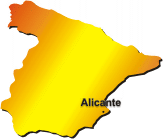 Since 2010 I’m Senior Associate of
InCompass-International Consultancy Services Ltd.,
working there and for other enterprises mostly home
based in the preparation of projects and the writing of
consulting offers.
Since 2010 I’m Senior Associate of
InCompass-International Consultancy Services Ltd.,
working there and for other enterprises mostly home
based in the preparation of projects and the writing of
consulting offers.
Two examples for my working content are visible in
the following presentations:
Additionally I’m currently helping my daughter in her
private projects in Alicante, attending mainly the IT part.
Moldavia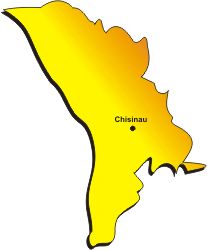 2008 - 2010
2008 - 2010
The Moldovan Project was initially planned to
introduce the biometric Passport in Moldova. It was
initially planned for 2006/07, so that the Moldovan
authorities have had implemented the biometric
passport by own founds and the emission was started
one month before the project has started in
Chisinau.
By the EU-Delegation was redefined the
tasks of the consultants, trying to support the
existing system and to promote the application for
the new biometric passport.
The passport was type
B, using the same booklets as before, mounting a plastic
container with the ship inside, valid solution for low
numbers of emission. The main problem was the legal
part, permitting the application for a non-biometric or
an biometric passport. Considering the significant
higher price for the biometric passport the demand was
very low.
The project was
affected by different problems, as main problems
must be considered:
- There was a frequent change in the
orientation of the EU-Delegation; the last
substantial change was initiated 3 weeks before
the end of the project. Here should be mentioned
that this last change has enriched the project
in a substantial manner, and similar changes
were before also suggested by the consultants.
- The project responsible staffs in the
EU-Delegation were changing in the last 3 months
of the project, not one of the former decision
makers on delegation level was in charge in the
final evaluation.
- On Moldovan side was changing in the project
time three times the government; the most of the
counterparts were changed. Over the tree
election time was no work possible, the Moldovan
decision makers were waiting for the election
results.
In the project were included the following
Moldovan institutions as beneficiary:
- Ministry of Information Development,
especially the stat own enterprise “Registru”,
enterprise in charge of the emission of
national ID documents, including the
production of the new national biometric
passport, supplying central IT server
technology and the required workstations and
server for the local offices in charge of
the biometric enrolment.
- The State own Enterprise
for Special Telecommunication –
enterprise under the Prime Minister Office
for the data security of national and
international data security for the Moldovan
Government and Public Key Authority for the
emission of the biometric passports, mainly
supplying server technology and financing
the membership of Moldova in the ICAO Trust
Centre to initiate the exchange of the
international public keys for the passport
control.
-
Moldovan Border Guard Service, including
the control activities on the border,
increasing their IT and control
capabilities,
- Moldovan
Ministry for External Relations
and European Integration, including the
emission of passports in the consulates,
including salvo conducts, and other register
activities, supplying to the Moldovan
consulates equipment for biometric
enrolment,
- Moldovan
Ministry of Internal
Affairs,
especially the Migration Department, in
charge of the emission of the refugee
passport, etc., the Department for Fraud
Detection, in charge of the verification of
confiscated documents, and the National
Interpol Office, especially for the control
on the Moldovan-Transnistrian-Boundery Line.
The equipment was mainly IT and control
equipment for passports.
Task was lastly, after many different
orientations, the development of a biometric
master plan for the country, including our
project as the initial part for the future
development. So was planned based in the
biometric passport, using the same
equipment, the implementation of biometric
ID card and joining all together later in a
Biometric Population Register.
With the
implementation in the consulates of Moldova
it’s possible to enrol the passport
applicants in place and to transmit the
request to Chisinau, producing the passports
centralised, distributing in the consulate
later only the new biometric passports to
the applicants. With the same equipment is
possible to emit salvo conducts, identifying
Moldovan citizen in the consulates and in a
later step to implement biometric visas.
In the meetings was promoted the stop of the
emission of the non-biometric passports. A
corresponding change of the passport law was
issued by the parliament and starting 2012
will be the biometric passport the only
emitted travel document.
In “Registru” was promoted the change from
the initial use of non-biometric passport
booklets, using a sticker with the chip and
antenna set, to biometric booklets.
Inside
our project – focus biometric passport – was
projected and included the supply of the
required technology for the beneficiaries,
incrementing their possibilities to work
with the biometric passports and to increase
the level of the border control. For all the
required equipment was elaborated the
technical description and the tender
documentation.
In this project I was
working as team leader.
Yemen
2010
In spring 2010 I was working in Yemen in
a mixed project, human rights issues and
civil register, with the
Authority
of Civil Status and Civilian Records inside the
Ministry of Interior. The objective was to write
the EU standard documentation for an new
project, including the elaboration of the
technical specifications of the equipment
needs and the draft budget. The project was
organised between the EU-Delegation and the
Ministry of Human Rights of Yemen, meanwhile
the entire civil register task was pending
on the Ministry of Interior.
In these
coordination’s we have had many problems, as example, I could travel to
Yemen only 2 weeks later as the team, there was no
possibility to get the required visa over the EUD or the
ministry, later the local expert of our team could
manage the problem.
But the lack of preparation of the
mission in the Civil Register was still huger, there
nobody had known from the mission until the EUD
project manager has brought my colleague (he was
travailing with the team before) to the Civil Register,
8 days after he arrives. All direct intents to contact
before where not successful.
Considering that Yemen
is since years in a nearly civil war situation and the Civil
Register – better should be said a biometric population
register with a low level of data (only any more as 1,9
million habitants have now the new ID-card, with
biometric enrolment - 7,9% of the population) – is one of the main
verified data sources, therefore with and important
operative importance. Usually the project manager of the EUD
must
organize in such institutions the initial contact.
After my arrival the
technical work with
the Civil Register was going smooth, with only one
problem, the exact number of existing equipment and more
detailed information about the system was not
transmitted from the beneficiary, consequence of the
lack of the corresponding permission from the Minister,
he was in the time of the mission in Marib, trying to resolve
the armed conflict between a usual governmental loyal
tribe and the government.
The
attached presentation was held on the initial phase of the
mission.
After the team has known
from third part that there were a parallel project of the UAE with 60
times more budget and the EUD has known this fact
without to say anything the base of trust was destroyed.
The EU project manager could be a good one for NOG´s and
human rights, but in the work with the government she
was not helpful and not qualified. Corresponding errors
in the technical content are evident and veritable.
The decision by the EU project manager to start with
phase 2 of our terms of reference (ToR) - preparing the
next, new project - and to postpone the execution of the
evaluation of the existing conditions and results of
former projects (phase 1 in our ToR) was one of the most
controversial issues. The request was explained with
time restrictions for the new project documentation.
The mission was broken up by the EUD
after the team has finished the second part - the
evaluation was cancelled. The results until
the break-off were over handed. About the reasons for
this step until now, final days of August 2011, there
are still discussions.
PS: If there is more interest on the
case, please contact me.
Ukraine 2010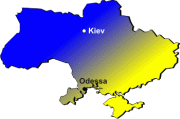
The task was to prepare the EU standard
documentation for General Budget Support for
the border sector of Ukraine. The central
point of the work was the elaboration of the
Readiness Report, evaluating the sector
plans and the macro-economical conditions
for such support.
The special condition of
budget support is that the financing sources are
directly given to the Ministry of Finance of the
country, and after this no more directly under control
of the donor, the final application is decision of this
ministry. To control the use of the transferred founds
can be included a transfer by tranches, connecting the
next one to improved conditions in the sector, expressed
in performance indices.
On other hand, the instrument
of budget support is seen by the EU under different
aspects, from the development point of view it’s an
apparently effective way to implement plans without
higher costs – especially transaction costs, and it’s a political tool for the relations to the
beneficiary country.
Coming to Ukraine in the months
before the elections 2010 the government was pro-west,
but the conditions in the country were not the best.
There were no effective procurement roles implemented,
the IWF has criticized the government of Ukraine in hard
form about the debt and not existing conditions for a
controlled cooperation, no finance minister in charge
since more than 9 months, and high noon in the election
campaign.
In EU delegation side was the political
willingness to give the budget support under these
conditions, a more political as content relevant
decision. This willingness was indirectly mentioned in
the briefing in the kickoff meeting and later confirmed
thru the verbal change of the terms of reference,
excluding the requests of an Integrated Border
Management (IBM) explicitly in the evaluation. There is,
outside of an not full implemented software for the
integration of the IT systems (ARKAN) between customs
and border guards, no relevant practical advance in the integration
of the border services. An exception is the work of
EUBAM, an EU project between Ukraine and Moldova, were
the staff is intending to promote IBM, partially with
very interesting results, but limited to the border
between Moldova – Transnistria and Ukraine.
Considering this circumstances the readiness report of
the team was a vote for certifying the readiness for a
payment in tranches connected to an indicator based
evaluation of the reached progress in the planned
activities, permitting so the control over the
implementation of the technically planned activities
(procurement of hardware, software, equipment, etc. and
the implementation of the same). This was the difference
between the other initiated budget support projects in
Ukraine, each of them 65 Million €, and our readiness report.
Our report was rejected by the EU delegation, all
intents to get a reason for this was transferred to the
consulting enterprise which has hired us and not
answered. Also other intents to get an answer were not
successful.
The consulting enterprise has send a new
team “to finish the report”, which has had from the EU
delegation the order to work without any contact to the
Ukrainian institutions, working mainly based on our
material. Their report was accepted, written with a
clear statement of “YES” the readiness of the sector and
the macro-economical conditions are given – without
indicators and tranche evaluations.
PS: For interested
in the issue, I have here both reports and I can
facilitate them for your own evaluation. In February 2011 was
stopped the financial support of the EU to Ukraine with
similar arguments we have had included in our report,
and a new, russian near government have at least a
acting finance minister. (Original
source Kyivpost 02/25/2011 or
local PDF)
Central America
2009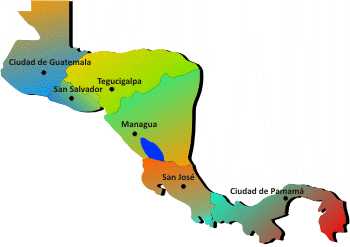
In spring 2009 I was member of a evaluation and project defining mission of integrated border management in
behavior of the EC in Central America.
In the tasks where included the following countries in alphabetic order:
-
Costa Rica,
-
El Salvador,
-
Guatemala,
-
Honduras,
-
Nicaragua and
-
Panama.
In the evaluation was a special focus on El Salvador, Guatemala, Honduras and Nicaragua, considering that these four countries have done a first step in the CA4 contract, permitting that there citizen are crossing the national border using the corresponding national ID as travel document.
There are also other contents in the CA-4 agreements,
like visa political issues, but these were not so
significant for the evaluation.
In the mission was evaluated the following issues, institutions and national standards of the six countries:
-
Central data
coordination between migration control, customs service and national police (including the connection I 24/7 to Interpol),
-
Equipment of the involved institutions on the border control points for information exchange with third parties (Airlines,
Transport Ministry, etc.),
-
Concepts for the deep area check of the border near areas,
-
Data integration on national and international level (CA4, Interpol),
-
Document security of the national passports and identification cards,
-
Existing cooperation agreements on national as well on international level (NAS, DEA, CA4, AMERIPOL, bilateral, etc.) and
-
Integration of other national institutions (Ministry of Agriculture, central services, ICAO, etc.)
In the analysis was included the migration service, customs service, national police, border guards and other related country specific institutions. The contacts where on technical level, as well on the vice minister level. Permanent counterparts were also the local national Interpol NCB´s and the police chiefs of the corresponding countries.
In the mission was evaluated the following issues, institutions and national standards of the six countries:
-
Central data capturing system of the migration services,
-
Coordination between migration control, customs service and national police (including the connection I 24/7 to Interpol),
-
Equipment of the involved institutions on the border control points for information exchange with third parties (Airlines, etc.),
-
Concepts for the deep area check of the border near areas,
-
Data integration on national and international level (CA4, Interpol),
-
Document security of the national passports and identification cards,
-
Existing cooperation agreements on national as well on international level (NAS, DEA, CA4, AMERIPOL, bilateral, etc.) and
-
Integration of other national institutions (Ministry of Agriculture, central services, ICAO, etc.)
In the analysis was included the migration service, customs service, national police, border guards and other related country specific institutions. The contacts where on technical level, as well on the vice minister level. Permanent counterparts were also the local national Interpol NCB´s and the police chiefs of the corresponding countries.
Based on the assessment analysis, in which was revised all capital airports and any selected land border checkpoints was developed a project targeting the improvement of the integrated border security. In this content was given all required technical specifications for equipment and internal function of the system.
The results were present on the XXIV Extraordinary Meeting of Chiefs of Police of Central America, Mexico and the Caribbean.
Other important point of the tasks in the project was the connection of the Interpol standard solutions MIND and FIND to be able to detect internationally wanted persons, lost and stolen travel documents, etc. To reach this objective was before the mission start a deep briefing in Lyon and the local Interpol NCB´s as well the regional Interpol representatives were our permanent counterparts.
The results of the analysis was the base for the EC project, for which was elaborated all the required documentation according the EC standards.
Jordania 2008 - 2009
2008 - 2009
In Jordan I was working for the
EU-Delegation with two different consulting
enterprises in three projects as short term
expert, all IT relevant.
The first project
was with new founded National Ombudsman Office, defining
the requests for an effective complaint management
system, including there workflow and document management
facilities. Based on the design was developed the budget
request and the requests for the countrywide system,
permitting the population appeal at least in the
corresponding province capital and over internet. Here
was a web based solution in connection with MS
SharePoint recommended and later implemented.
The
second project was oriented to a similar complaint
management system in the
National Centre for Human Rights and the update of
their web page. For the complaint management was
implemented on central side the required hard- and
software and the web site templates were designed.
The
last small project was to support the library of the
Juridical Institute of the Ministry of Justice in
Jordan, permitting an internet access to the Human
Rights relevant literature and links to national and
international relevant organisations. For this task was
developed a web interface, including all sources of the
library, using the data stored before in the ISIS system
of the library.
For all institution was also defined
the training needs of the acting staff.
Nicaragua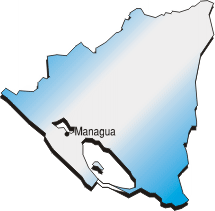 2008 - 2009
2008 - 2009
In 2008 - 09 I was working in a project of the
EU-Delegation in Nicaragua on the evaluation of the
requirements of the National Civil Register Service
inside the
Supreme
Council of Elections (CSE) to fortalice the existing
register system and to support the emission of the new
national biometric ID-card, project also executed by the
CSE. Objective of the mission was to elaborate the EU
standard documentation, Action Fiche, Logical Framework,
etc., including a first estimation of the costs of the
project.
In the studies was defined the following
initial situation:
- The Civil Register activity is technically supported in a
very heterogeneous level, mostly depending of the
support of the local administration and their access
to national and international projects,
- In any 20 municipal administrations was
developing a Swedish project including special
software for this tasks, in others were used Excel
to have an index system over the register
activities, meanwhile in other registers all work
was done manually and based on the books,
- The registration level was significantly
different between the Pacific and Atlantic cost
provinces. The registration gap was especially high
in the RAN and RAS – the northern and south
autonomous region of the Atlantic cost, resulting of
the low population density and the tribal structure
in these indigenous areas,
- The central level of the register was more
focused in the microfilm production of the books,
the IT support was low, mostly as consequence of the
lack of interest of the Civil Register
administration,
- The emission of the new National ID Card was
started in the capital Managua, and any province
capitals as pilot project of a Spanish project,
executed by the CSE and the Spanish enterprise,
Transtools, for the extension of the project to the
other provinces where no financial reserves,
- The Spanish project was defining by the software
development a central and workstation base the
technological standard, which should be implemented
in the part to be realized inside our project,
trying to avoid double work or incompatibilities in
the countrywide solution.
Based on the existing equipment for the register
activities was defined the minimum standard of
technical equipment for an Civil Register Office and
included in the supply plan. Also was included the
acquisition of mobile workstations for the use in
NGO or governmental initiatives in the field,
especially in the Atlantic cost and the central in
Managua. The software requests were coordinated with
the CSE, the Swedish project and Transtools, with
the target that the central level was assigned to
Transtools inside the existing Spanish project and
the local software to the Swedish project. The first
coordination meeting between the involved parties
was held our on initiative.
In the evaluation of
the Spanish project were suggested small changes,
but mostly evaluated as base for the additional
support by our project. There were included all
hardware and software for the extension of the
enrolment to all municipal capitals, maintaining and
extending the
production of the cards centralised in the CSE.
Initially was suggested to join the both activities,
civil register and enrolment for the ID card, but by
existing administrative problems couldn’t be
maintained this proposal. Only with the portable data
stations was this compromise possible, means the
mobile workstations have now also the required
equipment for the biometric enrolment.
Considering the special importance of the
biometric ID-card emission, detecting so multiple
enrolment of one person under different identities,
permitting in combination with the civil register
all time differed registering acts (late birth
registration, family status changes, etc) a
effective support to the administrative system of
the CSE. Therefore was decided to implement on
central level the search capacities of an 1:N
fingerprint search system, one of the most expensive
components of the project.
For all technical and
administrative activites was done the technical
specification and the budget.
The project was
combined with NGO activities to increase the
awareness of the importance of registering
activities, especially birth as well as
death registration.
 Spain
– 2006 until now - Freelancer
Organisation and IT
Spain
– 2006 until now - Freelancer
Organisation and IT
Currently I’m living with my
family in Spain, more exactly in
Alicante and I’m working again as
freelancer in the consulting area.
There are 3 focus issues I’m
attending currently, which are:
-
IT works in the area of optical
sample recognition for shooting
stands to get the real results on
base of the image of the target
-
Security and IT consulting,
especially under application of
biometric methods, integrating
different scanning devises into a
unique system
-
Publishing and updating Web-pages
for local and international users
My family and I am locally
flexible to move without bigger
problems, if there are long term
contracts or tasks – in the case of
short time contracts we prefer to
stay in Spain.
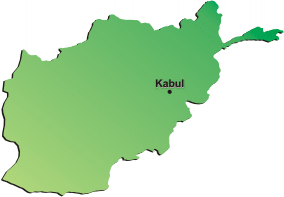 Afghanistan
– 2004 – 2006 - Ministry of Energy and
Water
Afghanistan
– 2004 – 2006 - Ministry of Energy and
Water
Over Decon I was assigned to a
World Bank project inside the afghan
Ministry of Energy and Water. The IT
project was embedded in the
Program
Implementation Support Unit (PISU),
which was founded to speed up and
coordinate the investment projects
in the afghan energy sector,
executed by different enterprises,
financed by different donor
organisations or governments.
So the IT part had two parts, to
support the task of the PISU, giving
support to the PISU staff, and to
build an IT base of the ministry,
including the training aspects of
the local staff.
Based on an IT survey of the
existing IT equipment, a plan for
the ministry was developed to build
a network. Initially the Ministry
had about 20 PC´s with one shared
internet access, using only mail as
corporative application, mostly web-based.
The status of the equipment was
precarious, virus infections and not
used equipment and software was
stored without being used.
After changing the ministry location
prepared a project for a ministerial
network, including voice
communication. The project was
changed as the Ministry of
Communication installed a basis
network so that this project was
used as future reference, optimising
the resources of our project to
improve and complete the network.
At the time I attended the project
the number of PC´s grew up to nearly
90, where about 70 were included in
the network, including two different
internet access points and a file
server. There were installed
additionally a print server, a
telecommunication server for voice,
and some other equipment. Parts of
the equipment were joined to the
government network, still under
control of the Ministry of
Communication.
Additionally, a information
inventory was done, capturing all
existing information in the
different dependencies of the
ministry, and starting with the
personal database projected, in case
of the personal database also
implemented, giving therefore the
ministry the possibility to develop
distributed corporative applications.
For the local user training material
was prepared in Dari for a Windows
basic course and an AutoCad course.
Both curses were given for the
current user of the ministry and the
enterprises inside the energy and
water sector (WAPECA, PCU, etc.).
The material was published, so that
all interested organisations and
groups can use this as starting
option, trying to complete the
material successively more.
Based on these activities I was
assigned from the representatives of
the donor organisations to be chief
of the coordination group for
Capacity Building, which acted
weekly to coordinate all activities
of the different donors in this
sector.
Additionally, we attended all the
maintenance needs of the internal IT
equipment, as well for all
enterprises which are forming part
of the ministry.
For the PISU, support was started to
georeference the existing equipment
of the
water and
power sector,
including generation and
transmission equipment, substations,
etc. The most exact result was the
Kabul City Network plan, including
the existing, planned and future
use. This data should be transferred
in a future to a GIS system,
completing the required data by the
construction enterprises and the
electrical network utility DABM, as
main owner of the equipment.
For PISU, an intranet was developed
and installed, giving the internal
user inside the ministry, as well
the external user, donor
organisations, enterprises, etc, the
possibility to consult the stored
data. Inside this data collection,
more then 6000 documents, partially
historical data (20%) and current
project information were published.
Problematically was that the most of
the donors are very restrictive in
supply the required information,
using the shared part of information,
but not supplying the own one.
Meanwhile there are no pressures
from the same administration of the
ministry and this will not change to
a better way. Therefore,
considerably more existing projects
were identified, based o the
assignment of ID-numbers of the
Ministry of Finance, as the ministry
was really attending – any 30% more.
Also was developed and hosted a web
site for PISU, where the new
projects are published and give
additional information for the
bidders.
Additionally we gave user support,
especially in the geographic and
drawing issues, as well as in the
confection of reports and other
documents. Also the evaluation of
bidding documents, especially in IT
or process control related issues
was included as example for the new
National Dispatch Centre, or other
contracts in execution etc. The same
support was given for external,
mostly short time experts, in
obtaining the required information
and all project relevant issues.
 Lebanon
– 2003 until 2004 - Ministry of
Energy and Water
Lebanon
– 2003 until 2004 - Ministry of
Energy and Water
I was assigned to an EU project
in the Ministry of Energy and Water
in Beirut, fulfilling the task to
analyze the information needs of the
Ministry and the future National
Energy Control Authority. Based on
an analysis of the existing
information in the different levels
and the plans for the future –
implementation of the National Load
Dispatch Centre of EdL –the possible
handling of this information and the
sharing between the different
institutions in the sector was
defined, according to the specific
tasks.
The difficulty in this assignment
was the different interests in the
sector, so it was very difficult to
get the requested set of information
and define exactly the current
possibilities and the additional
needs to be included in the new
system. Giving this situation I was
suggesting different possibilities,
considering the privatisation as
case, but also the status quo,
trying to give for both cases an
effective working system, supporting
the decisions on each of the levels
inside the Lebanese energy system.
The contract in Lebanon was with
Decon on behalf of
MVV.
 Germany
– 2001 until 2003 – working as
freelancer in Consulting and IT
Germany
– 2001 until 2003 – working as
freelancer in Consulting and IT
Back in Germany I was working as
freelancer for general business
consulting and IT in different
enterprises, trying to establish my
family in Malchow, a small city in a
pretty environment in the north of
Berlin, working mostly for Berlin
based enterprises, but also for
local and Hamburg based ones. A
small part of international
contracts was realised, especially
as connection of my former works in
Peru, there were still contacts with
RENADESPPLE and IOM, but also in
other countries. Giving the nature
of a distance work with limited
possibilities to make in site checks
the importance of these works was
limited.
In this time I worked for more than
50 different enterprises,
interesting and mentionable projects
I have had 3 – the other tasks were
more conventionally, economic
calculations and evaluations or web,
design and pre-printing works.
Mentionable projects in this time
are the followings:
-
Elaboration of business project for
biometric equipment combination and
the development of the corresponding
software with
TechNet Berlin
-
Participation in the elaboration of
a project for a central maintenance
system for Syria inside a EU project
for Decon – in the bidding
Decon was winning the contract,
but the project was before the start
cancelled by the EU
-
Business consulting and
implementation of an IT network in
one of the biggest agriculture
companies, the
Agrargenossenschaft Malchow
This was the first time I was
doing anything in the agriculture
sector and for it was amazing for me
to see the high technical level in
the modern agriculture. The modern
combines are doted with GPS and able
to report directly from the field
the results of the field, as direct
value and in the average by hectare.
All these data can be integrated in
special programs for a statistical
evaluation and give advice for other
operations, like fertilization, etc.
The firstly underestimated task was
really challenging. The result was
so satisfactorily that I’m still
attending issues of this
cooperation.
In 2003 I was ask by
Decon to take an assignment for
project in Lebanon.
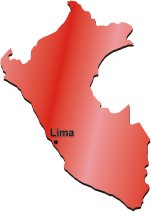 Peru
– 1997 until 2001 – Working in a multi-ministerial
environment – based in the Ministry for Public
Affairs, General Attorney of the Country
Peru
– 1997 until 2001 – Working in a multi-ministerial
environment – based in the Ministry for Public
Affairs, General Attorney of the Country
In Peru I was assigned from 1997
until 1999 to the
Ministry for
Public Affairs, General Attorney of
the Country, to give support to the
institutional reconstruction of the
ministry, executed by the Executive
Commission of the Ministry. In the
moment I was integrated to the
Ministry I was given the following
assignments:
- Elaboration of the plans of a database
based intranet for the project control of more
than 250 different projects contained in the
ongoing process of the justice reform in the
country and implementation of this project
- Organizational studies to the working
process of the prosecution offices inside the
ministry, called Project New Prosecution
Office Model.
- Decentralise the prosecution office and
assigning police districts to each office,
maintaining a nearly equal labour charge
- Organisational studies for a algorithm for
the assignment of cases to the supreme
attorneys offices
- Evaluation and restructuring of the
central information system of the ministry (SIATF
– Sistema de Apoyo al Trabajo Fiscal),
including the software for the Central Office
for Forensic Medicine
- Elaboration and implementation of an
Intranet of the Ministry, focused in the
process charge, staff information and case
assignment
- Execution and evaluation of procurement
activities for all the IT- and communication
equipment for Lima and all provinces
- Daily support of the IT department and the
Executive Commission
The Intranet Project Control was
a new tool for the project work,
working with a report database,
which should be updated by each
project team periodically. The
projects out of time or with
resource conflicts were given as
special report, opening the intranet,
new starting projects were focused
the first time, etc. In the year
1997 this was a goal, giving also
external users access to the data,
using tunnelling and VPN-technology.
A second task was the reorganisation
and data analysis of
RENADESPPLE,
the “Registro Nacional de Detenidos
y Sentenciados a Pena Privativa de
Libertad Efectiva”, a 1990 created
register of the persons detained and
/ or condemned for the criminal act
of Terrorism and Treason of the
fatherland. The register was created
with USAID help, but abandoned in
1995. In RENADESPPLE are joined all
the ministries and institutions
involved in the process, this are:
The first task in this project
was the evaluation of the existing
system, programmed in Foxbase for
DOS and with a data entry based on
telephone and radio calls. The
database was highly inconsistent as
result of different spellings of the
names of the registered persons and
other reasons. So it was very common
that a detained person was giving a
wrong name in the first instance
which was opening a record, and in a
later instance, the person was
identified correctly, and so on.
Resulting on the survey was elaborated the
following for RENADESPPLE:
- Making consistence of the database,
mounting the system in reverse form,
assigning a detention as opening a event
or record
- Eliminating different spellings of one
backward identified person
- An interesting result was that any
1300 persons were “lost” between detention
and the prisons – a result later nearly
correct verified by the Congress of Peru
- Configuration of the modem connections
between the different instances of the
chain of RENADESPPLE
- Georeferenced evaluation of the data
with MapView an Excel (until version 2000)
- Extension of the system to drug
offences
- Conception for a new system under
ORACLE
- Different other related tasks
A special problem in the initial
phase of the project was the
different data and the restrictions
to access the data of the involved
institutions. But resolving also
collateral problems in these
institutions the required permits to
access the data was given.
The collaboration with RENADESPPLE
was all the time in Peru, even in
2003 from Germany.
From 1997 to 2003 – also working
later after my return from Germany,
I worked for the
Ministry of
Interior, especially for the
Peruvian migration service –
Dirección General de Migraciones y
Naturalización. In the ministry I
was assigned to the Central
Procurement Department (OGA) and the
IT-Department, but mostly working
for OGA, especially in biometric
projects. The special tasks for
biometric relevant data as assigned
by the Minister to my group any days
after my arrival in Lima,
consequence of the problems in the
handling of so called “Homonímias”,
the massive repetition of name and
surname of the citizens, abused
especially in the criminal cases and
in the emission of ID-documents. So
I was assigned the project
development and execution of a
biometric based passport system,
winning so a better control over the
border crossing persons. In the same
project it was also included that
the passport should be readable by
machine. The project was designed
and realized in 2 years at first in
Lima and later implemented in the
regional dependencies in the
country.
Based on this project, which
included fingerprint, hand geometry,
digital photo and digital sign, as
well special elements for security
documents, a
big number of additional
applications for the ministry were
developed, mostly designed or
revised by my working group.
Over the connection with the
Peruvian migration service, and the
requirement to evaluate the data of
the migration services, the contact
to IOM was given. So we have done in
1997 the first centralized
activities to make consistent the
captured data and in the project
SIMICA the first consistent overview
about migration movements between
1990 and 1996 was giving. I was
involved in the project until 2002
as technical advisor, responsible
for the data treatment and the first
evaluation. In the progress of the
projects the evaluation of migration
movements of Colombia, Ecuador and
Bolivia, was included. In case of
Venezuela the evaluation was only
partial. Each year, a yearbook of
these data was published. Also there
was a yearly convention, in which I
was actively taking part, giving an
overview about the status of the
changes in the IT-base of the
Peruvian migration service and the
results of the SIMICA evaluation.
From 1997 until 2001 I was working
also as consultant for the
Peruvian
Navy, Marina de Guerra del Perú, specifically for the Direction of
Telematics and Communication (DIRTEL).
From the year 1999 until 2001 also
as project counterpart and project
manager for the supervision of
contract in the IT area between the
navy and private enterprises. As
consultant I was responsible for the
elaboration of the bidding documents
for the new IT systems, involved in
the bidder evaluation and in the
definition of all technical aspects
of the systems. Mostly the
administrative systems, like
Personal, Maintenance, Procurement,
Health Care, etc. were the work
scope. Considering that the change
from mainframe based systems,
elaborated in the early 80th, to
decentralised PC-based distributed
systems in three tier architecture,
the task was very intensive in
budget and requirements.
In the operative systems my
involvement was obviously lower,
considering my status as foreigner.
In relation to this, I was directly
involved in the security part and in
the installation and elaboration of
the navy intern mail service, based
on MS Exchange and the Intranet,
permitting so over transaction
servers a direct access of internal
data from all palaces where the navy
had the dependencies, including the
special forces, fulfilling police
tasks in the interior of the
country.
With this background, and the fact
that retired staff of the Peruvian
Navy was working in many official
civil institutions in key positions
I received the order to help in IT
problem and after bigger incidents
in these institutions. So I had to
analyse different problems in these
institutions, two of them more
extensive, in INRENA - Instituto
Nacional de Recursos Naturales – I
worked with my team 4 months in
1999/2000 and OSINERG - Organismo
Supervisor de la Inversión en
Energía – 5 months in 2000.
In
OSINERG - Organismo Supervisor de
la Inversión en Energía del Perú – I was assigned the task to revise the
security system in the
administration level and the
structure of the information stored
in the Oracle-Database, as well as
the security for the data access.
Reason of the assignment was the
massive data loss in an incident to
be analysed.
After the analysis, the reasons of
the information losses could be
defined and based on it, a more
efficient control and backup system
was proposed, using mostly the until
this moment not employed
configuration possibilities of the
server and the Oracle database. In
an additionally part, the required
changes in the Energy- and Liquid-Fuel
database were proposed, based on a
evaluation of the internal structure
and the real existing workflow in
the institution.
In the case of
INRENA - Instituto
Nacional de Recursos Naturales – the
initial situation was different;
there I was assigned to make the
studies for a web-based projects
control system. INRENA is the
beneficiary of different
internationally projects, financed
by international or bilateral
contracts. Taking the Intranet
Project Control of the General
Procurator and any works in the Navy
as example, was required to develop
a similar solution for INRENA,
taking care of the specific
conditions of this projects. The
required analysis was executed; the
suggestions for the database
structure, the Intranet and the
security requirements were given in
the final report.
The implementation of the system was
assigned to a private enterprise. As
I know, this is the unique case that
one of my projects was not finished
with the required achievements; the
solution was not implemented – as I
know. Reasons of this fault were
mostly the followings:
- Change in the direction of INRENA
- Problems to coordinate the report
process between the different involved
organisations
Especially the last point was
crucial, the coordination between
own dependencies, other institutions,
NGO´s and international donors was
very difficult, general roles couldn’t
be established as easy as in strong
centralised military or similar
institutions.
With the political instability of
the year 2000 / 2001 in Peru, the
working conditions becoming day by
day poorer. My work there was
technically, but with a big
recognition and political support,
giving that the most of the projects
must be reported directly to the
corresponding Minister, also
distinction were given by the
political leader, these instability
was affecting my work. Many
political counterparts were changing
day by day, the new incoming
political leadership was looking our
projects with the idea to find there
problems and hidden aspects. In
consequence of these effects I was
limiting my involvement until March
2001 and taking later the decision
to quit there, considering the
communication with the new political
leaders as limited, still with good
technical contacts, but too much
politicized.
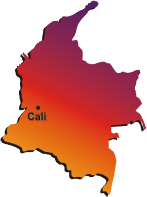 Colombia
– 1994 until 1997 – Working with CIM and the CVC
Colombia
– 1994 until 1997 – Working with CIM and the CVC
In Cali I was assigned to the
CVC
– the Corporación Regional Autónoma
del Valle de Cauca. This corporation
was a regional development
corporation, founded in 1954, based
on the experiences of the Tennessee
Valley Development project as a
corporation between governmental,
local Colombia, and the greatest
generator of electrical energy.
In 1993 was taken the decision to
privatise the energy sector and to
incorporate the rest of the CVC as
dependency of the new founded
Ministry of Environment. So
EPSA was
founded in December 1995 – as energy
utility and CVC was incorporated to
this ministry.
In this situation I was hired by the
department of “Organisación,
Métodos y Sistemas” (OMS) of the
CVC in 1994. The department was in
charge of the IT and organisational
development.
The situation in the IT area in this
moment was characterised in CVC,
like in many other places, OMS was
focused only in the IBM mainframe,
executing the payroll program and
any other selected tasks, meanwhile
in the other departments, the first
projects for local networks were
started, including PC applications
and database under exclusively
control of the respective
departments. As a result, we run
into duplication of data, with
duplication of maintenance and in
many cases with different data for
the same issue.
On the other side, the planned
separation of the electrical sector
from the CVC, and massive personal
reduction produced a certain
institutional instability, with
strikes and occupation of parts of
the installations by unionists.
With my professional background and
new in the CVC I was selected mainly
to work on the unbundling of
electrical sector, as first step to
the privatisation. The advantage for
the CVC was to have there a person,
outside of all groups of interests,
and only work with the facts.
These tasks, starting in 1994 until
1995 were one part of my daily work,
starting with the collaboration to
the development concepts, until the
preparation of the staff list was
part of my tasks, giving support to
the different involved departments
of the CVC.
In the IT area we have started in
1994 to recover the area, making a
survey of all resources in the CVC,
including the regional dependencies
outside of the head office in Cali.
This survey included the hardware and also the
applications and data managed in the
corresponding dependency. Based on
this I developed a plan to join the
existing islands to a corporative
network with direct access to the
existing mainframe application data.
Considering that the CVC have the
entire department as area of
jurisdiction, the plan should
include WAN characteristics.
After the separation of the energy
area from the CVC the German
government decided that I should
stay in the public part, considering
that the government couldn’t support
a private enterprise.
In the 3 year I was working in the
CVC I have had the following tasks:
- Participation in the unbundling of the CVC
in order to privatise the energy production
- IT-Survey inside the entire institution
- Network planning and elaboration of the
tender documents for the procurement of the
required equipment (more then 250 PC, 2
mainframe and other related materials),
preparing the test environment for the selection
process, etc.
- Installing the network and Exchange Server
as base for the mail service, as well for the
first corporate applications
- Conception and implementation of a training
program
- Collaboration in the institutional GIS
system, based on ArcInfo and georeferenced data
evaluation
- Conception and project control the IT System
“Balance Production, Use and Ex- and Import” for
sensible products – dual use
- Support planning and control for mainframe
and PC systems
- Modernisation of the Oracle based systems
The contract in Colombia was
finishing very fast, by political
reasons from the German side, a
short time before there was said the
project will go on for other one or
two years, but in a short time I was
getting the advise to finish in
Colombia and the order to move to
Peru for other contract.
 Germany
– 1990 until 1994
Germany
– 1990 until 1994
Coming back to Germany, and this
was a much different Germany from
the one I have left in 1984, the
chance to go back to the IHZ was no
more real, the opinion was that all
vacancies were frozen until the
university would have new
instructions.
Two of my friends (also graduated in
the IHZ) and me found the Betediq
GmbH for technical diagnostics. But
the time was bad for our start, all
the east-german power plants had the
same insecurity about future, and so
they didn’t signed any contract.
Also, in the western part of Germany
there was a big scepticism about
eastern enterprises. In order to
survive, my friends changed the
working content of our enterprise to
a trade company. This was the sign
to go out and to look for a new task.
In September 1990 I started my work
in the Premium GmbH Berlin, a
consulting which was working in 95%
for the Treuhand Gesellschaft, the
organisation which organised the
privatisation of the former east-german
governmental enterprises. Special
focus of the Premium was the
construction material industry, a
very energy intensive industry.
I was hired for the energetic
evaluation of these enterprises and
as Chief of the IT-department. In
the Premium GmbH I was working until
November 1993, taking part in the
privatization of more then 20
enterprises, conducting 7
privatisation projects directly. But
the task was limited in enterprises
with chances to be privatised; step
by step we must suggest closing more
and more enterprises. In 1992 most
of the good enterprises had been
made private or the process was
still ongoing.
My tasks in the Premium GmbH were
the followings:
- Energetic evaluation of the production
facilities of the enterprises,
- Evaluation of the level of process automation
and the IT equipment of the enterprise
- Economic evaluation of the enterprises,
creating different scenarios for the future
development and suggesting (base on the results)
the steps required for the future private owner or
for the Treuhand to invest into the enterprise,
trying to improve the value of the enterprise for
the future privatisation,
- Elaboration of credit documentation required
by the banks to finance the planned development
under private or governmental direction,
- Building the internal network of the Premium,
- Final elaboration or supervision of all
outgoing documents in DTP-programs, like Page
Maker and drawing programs,
- Creation of internal applications for document
and product management.
Additional to these tasks I was
working on my own as teacher in the
pool of CCC GmbH Berlin. This
enterprise was assigning teachers to
governmental and private education
enterprises from Berlin and
Brandenburg, mostly to give IT
courses for unemployed engineers and
technicians. Such courses were
assigned for 2 or 3 weeks each 3
months.
I developed a special relation with
GeoNet Berlin GmbH. This was a
mailbox service, especially focused
in the connection between Germany
and Russia, with a big list of
clients, like Mercedes, BMW, GTZ,
governmental institutions, etc. For
this company I designed the
materials for selling, the
presentations for the Hannover Messe,
for the Cebit, etc., as well as the
evaluations for credit and
governmental support programs.
In November 1992 my wife was faced
bad times in Berlin, especially
concerning the confrontation with
neo-Nazi. So we looked for a new
assignment outside Germany.
In 1993 I signed with
CIM – Centre
of International Migration – a
German governmental development
program financed by the Ministry of
Economic Collaboration – a contract
to work in Colombia. After a 3 month
preparation course for the
assignment in Colombia in the
DSE in
Bad Honnef my family moved on March
1994 to Cali, Colombia.
Cuba –
1984 until 1989 – working in the Cuban Energy Sector
From 1984 until December 1989 I
worked in Cuba, first until 1987 in
the power plant "Nueva CTE Habana"
in Santa Cruz del Norte, Habana.
Then, I worked until 1989 for
TECENERGO, a scientific service
enterprise of the Cuban Ministry of
Basic Industries, which is also
responsible for the power industry.
In both assignments I worked for the
department "Automated Control
Systems" - SAD - mostly in IT-oriented
projects. In the power station I
developed systems for the plant,
whereas in TECENERGO the
applications I developed were used
in the entire country.
At this
time in Cuba I worked on the following projects:
- In 1984 and 1985 I was a member of a permanent
work group to develop software for the control of the
Russian supply of parts for the power plant which was
in this time under construction. At that time the
connection between Habana and Leningrad (now St.
Petersburg) was done by modem in order to transmit the
data of the supplied parts.
- From 1985 to 1989 I was member of the working
group “Temperature and Mass Balances - Automatic
process control”. The group was in charge to connect
NEC PCs to the plant units to capture the process
values (150 analogue and 30 digital values). Based of
these values, the heat balance of the units was
calculated and hints were given to the unit operators
seeking to minimize the specifically heat consumption.
- From 1985 to 1989 I was in charge of the
development of a system for the metrological control
of the measurement equipment of a power plant. In
1986, the system installation was mandatory for all
plants of the Ministry of Basic Industries in Cuba.
- From 1984 to 1987 I was in charge of the group
“Technical diagnostics”, which worked in two
directions,
- Preparing the conditions for the implementation
of a standard for the damage data recovery and
maintenance planning based on the East-German TGL-standards
(Classification mostly based on the same Russian
equipment) including the organisation and IT-support
- Preparation and pilot test on rotation equipment
(big pumps and motors) for technical diagnostic
based on periodic vibration control, including IT-support
for the data storing and evaluation
- From 1987 to 1989 I was performing the same job
as member of the same work group on higher level,
preparing the same for the country, including the
implementation of the damage data recovering system.
A 15 minutes loop was additionally included In the
online data recovering system for a post mortem
analysis.
- Additionally I was at the same time in charge of
the elaboration of an offline IT-system fuel economy
– with interpretation for maintenance needs.
My scheduled 4 year contract was
extended on my wish to move together
with my family from Cuba to Germany.
Meanwhile I knew my present wife and
we had our first daughter. In
October 1989 we obtained the
necessary permits from the Cuban
government to marriage, after
waiting for this document more than
16 months. On the same month we had
our wedding party and in December
1989 we moved to Germany.
 East Germany – until 1984
East Germany – until 1984
During my childhood, I went to
school in Leipzig. After the 10th
class in 1971 I moved to Hirschfelde
to study Technical Process
Management and to finish high school.
After that, I served in the military
for 18 months.
I started pursuing my academic
education in the
Engineer High
School of Zittau (IHZ) on 1976 and
graduated with a Bachelor of
Economic Engineer on 1980. I
specialized in Economy of Power
Generation, Transmission and
Distribution. My diploma thesis was
entitled: "Contents and Distribution
of Work during On-Site Maintenance
of 500 MW Units". All certificates
were obtained with "Suma cum laude".
In 1980 I accepted an offer to join
IHZ as a Scientific Assistant in the
area of Ergonomics and Measurement
and stayed there for 4 years.
In IHZ I worked as a teacher in
measurement technology since 1983
after finishing my dissertation on
micro-movement research for reactor
welding as basis for robot
programming. Additionally I helped
in the office of international
studies in the program for Spanish
speaking foreign students, improving
so my language skills in Spanish.
The title of the dissertation was "Organization
and Productivity during On-Site
Maintenance of 500 MW Units". In
February 1984 I defended my Ph.D.
thesis with the predicate "Cum
laude".
In that time in Germany, any person
wanting to work at a university
would need at least 4 years of work
experience outside academia. So I
left IHZ to have later a chance to
come back and get a full teaching
position.
Following a very good offer, I moved
to Cuba on November 1984 to work in
the basic industry.
Download
PDF-file CV Dr. Holger Frommert - Tabular form
Download
PDF-file Selected documents as annex to the CV Dr.
Holger Frommert



 Since
the end of 2012, I am usually back in Malchow for family
reasons, because my mother needs help because of her
age. I work from here on different projects, partly
home-based, partly on-site. Over the last few years, I
have worked on projects for InCompass-International
Consultancy Services Ltd, but also developed my own
projects on my own.
Since
the end of 2012, I am usually back in Malchow for family
reasons, because my mother needs help because of her
age. I work from here on different projects, partly
home-based, partly on-site. Over the last few years, I
have worked on projects for InCompass-International
Consultancy Services Ltd, but also developed my own
projects on my own. In
addition to these projects, I have created a web site
for consultants that provides country information in
maps and as links to further sources. The site is based
on a link database that provides not only simple country
information but also specific information such as
energy, environment, crime and terrorism. This site is
designed to help consultants get a picture of a country
in the shortest possible time.
In
addition to these projects, I have created a web site
for consultants that provides country information in
maps and as links to further sources. The site is based
on a link database that provides not only simple country
information but also specific information such as
energy, environment, crime and terrorism. This site is
designed to help consultants get a picture of a country
in the shortest possible time. In
2016, I participated in a one-month maritime safety
evaluation mission in the West African states of
Nigeria, Benin, Togo, Ghana and Ivory Coast of the Gulf
of Guinea, which was tasked with defining a project to
increase safety at sea. The Mission also visited the ICC
co-ordination center in Cameroon in Yaounde for the
whole Gulf area and in Douala the MRDC Coordination Unit
for Zone D, which is the only area to have its own
permanent operational unit in Malabo represents a
prototype to other coordination centers. The actual
project area, however, were the first 5 states. I was
responsible for the IT and communication technology in
this project.
In
2016, I participated in a one-month maritime safety
evaluation mission in the West African states of
Nigeria, Benin, Togo, Ghana and Ivory Coast of the Gulf
of Guinea, which was tasked with defining a project to
increase safety at sea. The Mission also visited the ICC
co-ordination center in Cameroon in Yaounde for the
whole Gulf area and in Douala the MRDC Coordination Unit
for Zone D, which is the only area to have its own
permanent operational unit in Malabo represents a
prototype to other coordination centers. The actual
project area, however, were the first 5 states. I was
responsible for the IT and communication technology in
this project.  In
2014, as part of an EU project, I participated in the
evaluation of a 2-phase tender for hardware and software
for the support of the Jordan Energy Information Center.
At this stage, the technical and financial suitability
of potential candidates for the project was determined.
My job was to support the evaluation by the Jordanian
Commission. After the evaluation of the first phase, 6
companies remained, which were invited to submit their
technical and financial offers in the second phase of
the tender.
In
2014, as part of an EU project, I participated in the
evaluation of a 2-phase tender for hardware and software
for the support of the Jordan Energy Information Center.
At this stage, the technical and financial suitability
of potential candidates for the project was determined.
My job was to support the evaluation by the Jordanian
Commission. After the evaluation of the first phase, 6
companies remained, which were invited to submit their
technical and financial offers in the second phase of
the tender. In
October 2014 I started in the IOM project
(International Organization for Migration)
"Proposals for the modernization of border
management from Paraguay". The project had
two phases, the first inventory in Paraguay.
In this phase, the following activities were
carried out:
In
October 2014 I started in the IOM project
(International Organization for Migration)
"Proposals for the modernization of border
management from Paraguay". The project had
two phases, the first inventory in Paraguay.
In this phase, the following activities were
carried out:
 Since 2010 I’m Senior Associate of
Since 2010 I’m Senior Associate of
 2008 - 2010
2008 - 2010


 2008 - 2009
2008 - 2009 Afghanistan
– 2004 – 2006 - Ministry of Energy and
Water
Afghanistan
– 2004 – 2006 - Ministry of Energy and
Water Lebanon
– 2003 until 2004 - Ministry of
Energy and Water
Lebanon
– 2003 until 2004 - Ministry of
Energy and Water Peru
– 1997 until 2001 – Working in a multi-ministerial
environment – based in the Ministry for Public
Affairs, General Attorney of the Country
Peru
– 1997 until 2001 – Working in a multi-ministerial
environment – based in the Ministry for Public
Affairs, General Attorney of the Country Colombia
– 1994 until 1997 – Working with CIM and the CVC
Colombia
– 1994 until 1997 – Working with CIM and the CVC